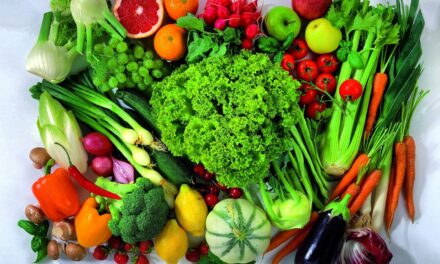Navigating the later chapters of life brings about a reflection on the importance of health and well-being, with nutrition playing a pivotal role in maintaining vitality and quality of life. For seniors, healthy meal planning transcends the mere act of dieting; it becomes a sustainable practice that supports ongoing health, energy levels, and disease prevention. As we age, our bodies undergo significant changes that affect how we process food, our nutritional needs, and even our appetite and taste preferences. Therefore, meal planning for seniors is not just about what we eat but how we approach eating as a holistic part of our lifestyle.
Understanding the nutritional needs of seniors is crucial. The body’s metabolism slows down, requiring fewer calories but higher nutrient-dense foods to maintain energy, muscle mass, and bone density, and to prevent or manage chronic diseases. Additionally, factors such as dental health, medication side effects, and changes in digestive function can influence dietary choices and nutritional intake.
However, healthy meal planning for those over 50 is not merely a dietary challenge; it’s an opportunity to rediscover food as a source of pleasure, nourishment, and social connection. It’s about creating meals that are not only beneficial for physical health but also enjoyable and satisfying. This article will explore the principles of healthy meal planning for seniors, emphasizing the importance of balanced, varied, and nutrient-rich meals that cater to the unique needs of those in their golden years.
From understanding the foundational elements of nutrition for seniors to practical tips on meal preparation and adaptation, this guide aims to empower you with the knowledge and tools needed to make healthy eating an integral part of everyday life. Whether you’re planning meals for yourself or a loved one, the goal is to foster a nutritious eating pattern that supports longevity, vitality, and a zest for life.
Nutritional Foundations for Seniors: Building Blocks of a Healthy Diet
At the heart of healthy meal planning for seniors lies a deep understanding of the nutritional building blocks that support aging bodies. Key nutrients, including protein, fiber, vitamins, and minerals, play critical roles in maintaining health and preventing age-related conditions.
Protein: Essential for preserving muscle mass and strength, protein needs may increase for seniors. Incorporating lean sources of protein such as poultry, fish, beans, and legumes into daily meals can help meet these needs.
Fiber: Fiber supports digestive health and helps prevent constipation, a common issue among seniors. Fruits, vegetables, whole grains, and legumes are excellent sources of fiber that can easily be incorporated into meals.
Calcium and Vitamin D: These nutrients are vital for maintaining bone health and preventing osteoporosis. Dairy products, fortified foods, leafy greens, and fatty fish are rich in calcium and vitamin D.
Omega-3 Fatty Acids: Beneficial for heart health, omega-3 fatty acids found in fatty fish, walnuts, and flaxseeds can reduce inflammation and support brain health.
Antioxidants: Foods rich in antioxidants, such as berries, nuts, and dark chocolate, can protect against cellular damage and support overall health.
Beyond individual nutrients, the concept of balance, variety, and moderation forms the cornerstone of healthy meal planning. Incorporating a wide range of fruits, vegetables, whole grains, lean proteins, and healthy fats ensures a diet rich in essential nutrients while providing the pleasure and satisfaction that come from diverse and flavorful meals.
Expert Insights on Meal Planning and Preparation
Meal planning for seniors involves more than just choosing the right foods; it’s about creating a sustainable and enjoyable eating pattern. Nutritionists and geriatric dietitians offer valuable insights into making meal planning efficient, enjoyable, and tailored to individual needs and preferences.
One key strategy is to focus on meal simplicity and flexibility. Recipes that require few ingredients and steps can reduce the burden of meal preparation, making healthy eating more accessible. Additionally, cooking in batches and utilizing leftovers can save time and ensure that nutritious meals are always on hand.
Adapting meals to meet specific dietary needs, such as low-sodium for heart health or soft foods for those with dental issues, is also crucial. This customization ensures that meal plans remain not only nutritious but also practical and enjoyable for the individual.
Furthermore, integrating social elements into meal times, whether sharing meals with family or friends or participating in community dining programs, can enhance the enjoyment of food and encourage a positive relationship with eating.
Summary and Practical Takeaways
Healthy meal planning for seniors is a multifaceted approach that encompasses understanding
nutritional needs, incorporating a variety of nutrient-dense foods, and implementing practical strategies for meal preparation and enjoyment. Here are key takeaways to guide seniors and their caregivers in nurturing a healthy and enjoyable eating pattern:
- Emphasize protein, fiber, calcium, vitamin D, and omega-3 fatty acids in your diet.
- Incorporate a wide variety of fruits, vegetables, whole grains, and lean proteins to ensure balanced and nutrient-rich meals.
- Adopt simple, flexible meal preparation strategies that accommodate individual dietary needs and preferences.
- Utilize batch cooking and leftovers to simplify meal times and ensure nutritious options are always available.
- Seek opportunities to make meal times social and enjoyable experiences that foster a positive relationship with food.
By embracing these principles, seniors can enjoy the benefits of a nutritious diet that supports their health, well-being, and enjoyment of life. Healthy meal planning is not just about adhering to dietary guidelines; it’s about creating a lifestyle that celebrates food as a source of nourishment, pleasure, and connection.






